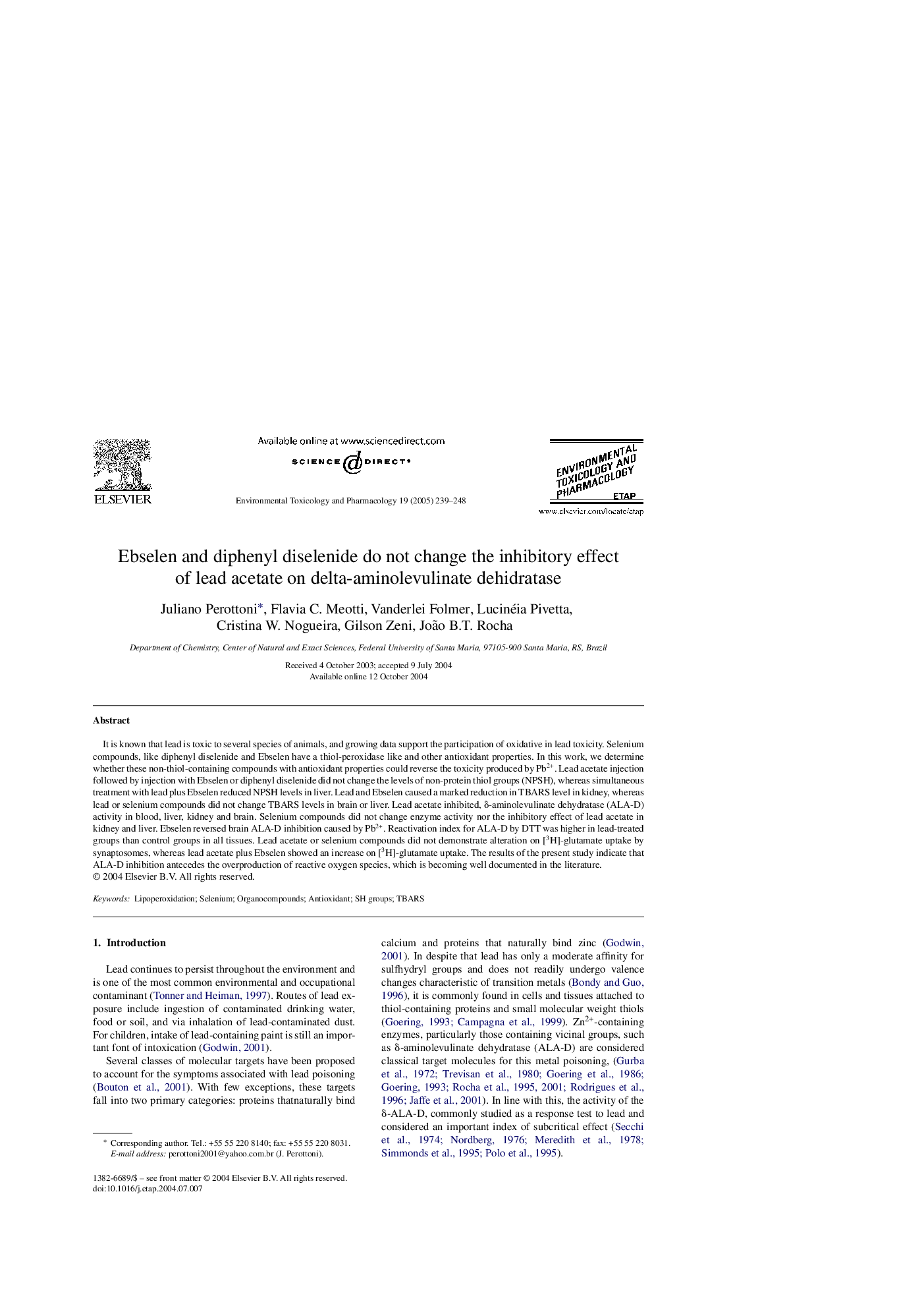| Article ID | Journal | Published Year | Pages | File Type |
|---|---|---|---|---|
| 9030167 | Environmental Toxicology and Pharmacology | 2005 | 10 Pages |
Abstract
It is known that lead is toxic to several species of animals, and growing data support the participation of oxidative in lead toxicity. Selenium compounds, like diphenyl diselenide and Ebselen have a thiol-peroxidase like and other antioxidant properties. In this work, we determine whether these non-thiol-containing compounds with antioxidant properties could reverse the toxicity produced by Pb2+. Lead acetate injection followed by injection with Ebselen or diphenyl diselenide did not change the levels of non-protein thiol groups (NPSH), whereas simultaneous treatment with lead plus Ebselen reduced NPSH levels in liver. Lead and Ebselen caused a marked reduction in TBARS level in kidney, whereas lead or selenium compounds did not change TBARS levels in brain or liver. Lead acetate inhibited, δ-aminolevulinate dehydratase (ALA-D) activity in blood, liver, kidney and brain. Selenium compounds did not change enzyme activity nor the inhibitory effect of lead acetate in kidney and liver. Ebselen reversed brain ALA-D inhibition caused by Pb2+. Reactivation index for ALA-D by DTT was higher in lead-treated groups than control groups in all tissues. Lead acetate or selenium compounds did not demonstrate alteration on [3H]-glutamate uptake by synaptosomes, whereas lead acetate plus Ebselen showed an increase on [3H]-glutamate uptake. The results of the present study indicate that ALA-D inhibition antecedes the overproduction of reactive oxygen species, which is becoming well documented in the literature.
Related Topics
Life Sciences
Environmental Science
Health, Toxicology and Mutagenesis
Authors
Juliano Perottoni, Flavia C. Meotti, Vanderlei Folmer, Lucinéia Pivetta, Cristina W. Nogueira, Gilson Zeni, João B.T. Rocha,
